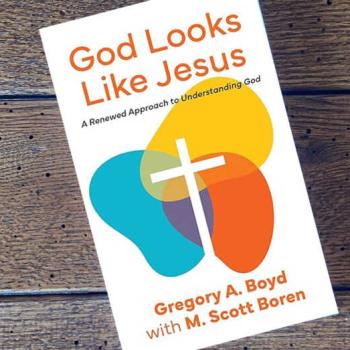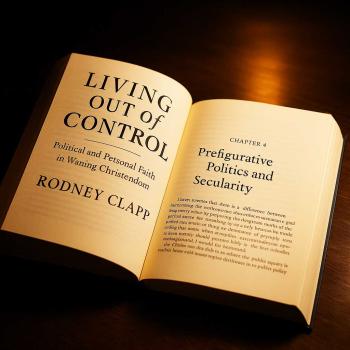The question of megachurches arises frequently. Recently someone here reported that an influential Baptist seminary president asked whether megachurches are the new liberalism. I’m not sure what that even means. “Megachurch” is a sociological phenomenon with theological implications. “Liberalism” (in this context, anyway) is a theological phenomenon. I am not aware of any sociological phenomenon called “liberalism” (when “liberalism” is used theologically). So, the question itself puzzles me. Perhaps the seminary president was thinking of cultural accommodation. Liberal theology has been called “maximal acknowledgement of the claims of modernity” (Claude Welch). Megachurches have been accused of being “church lite”–Christianity accommodated to consumerism. So, many critics of megachurches see them as ecclesiastical accommodation to American consumerism in a manner analogous to liberal theology as accommodation of Christian theology to modern thought (e.g., naturalism).
This past week I spend several days in and around one of America’s best known megachurches. It happens to be, like many of them, theologically conservative. At least on paper, in terms of stated beliefs and ethical commitments. From a certain theological perspective it might even be viewed as fundamentalist. Being there certainly raised thoughts about the megachurch phenomenon–especially as I had just recently been asked about the seminary president’s question.
The megachurch phenomenon as has been studied and discussed quite thoroughly in Christianity Today and Christian Century and in numerous books about megachurches. One thing I find helpful is to look to history. People seem to think that megachurches are new–appearing only in the last two or three decades. Most people trace the phenomenon back to Willow Creek Community Church in Chicago’s suburbs. Depending on how one defines “megachurch,” of course, it may go back much farther.
I suspect that when people criticize megachurches, more often than not, what they are really criticizing is “seeker sensitive” Christianity. But, of course, the two things are separable (unless, of course, you simply define “megachurch” as “seeker sensitive church lite.” But, of course, there’s nothing in the word “megachurch” that requires or even implies that.
In such discussions we need to separate issues clearly. Are we talking about size or ethos? Most of the criticism, I think, is aimed at ethos.
The megachurch I visited this past week certainly has the external appearance of the ethos people criticize. The physical aspect of the church is that of a college campus–many buildings spread out over a large area with several huge parking lots. Everything about it reeks of consumerism. It has the “feel” of an outdoor shopping mall. It has three restaurants, playgrounds, picnic areas, colorful buildings, amazing signage, fountains and waterfalls, etc. The youth building is larger than most large churches.
The point critics make became clearer to me as I walked around the church’s campus. The “feel” was the same–moving from a major mall in an affluent suburb to this church. I looked in vain for anything that clearly marked it as sacred space. Only in the “sanctuary” (a large, darkened auditorium with literally tons of technical equipment for sound and light) did I see a religious symbol–a cross that was dwarfed by the massive steel and glass.
All of that is surface, however. In my opinion, it’s not unimportant, but it’s not directly relevant to theology UNLESS the absence of symbolism was intentional. I have no way of knowing that. And much smaller churches, even fundamentalist ones, are just as lacking in Christian symbolism.
Before commenting theologically, let me just say that, in terms of size and ethos, megachurches are nothing new. Again, people could benefit from knowing a little history.
Let’s go backwards. Willow Creek was certainly NOT the first megachurch–even in the sociological sense of seeker sensitive ethos. I remember quite a bit of controversy about Rex Humbard’s Cathedral of Tomorrow in Ohio. The building was built in 1958 and Rex and Maude Aimee were on television throughout the 1960s and 1970s. It was a show with lots of entertainment (especially quartets–this is where the gospel quartet “the Cathedrals” got their name). The people I grew up among criticized Humbard and his church for “hiding” their Pentecostalism in order to draw in large numbers. To what extent that was true, I don’t know. But the accusation was identical to the one many conservative evangelicals have leveled against Willow Creek and Saddleback and other megachurches–of softening the gospel and watering down Christian particularity in order to attract crowds.
Going back further: Melodyland Christian Center in Anaheim, California reaped a whirlwind of controversy for using entertainment to attract crowds.
Going back further: Jack Hyles’ First Baptist Church of Hammond, Indiana. The accusation was that Jack and his pastoral team went out into poor neighborhoods with buses to bring hundreds, if not thousands, of unchurched children to church using various manipulative techniques simply to achieve size.
Going back much further: Perhaps America’s first real megachurch (in terms not only of size but of ethos) was Angelus Temple in Los Angeles. Aimee Semple MacPherson was accused by critics of attracting large audiences with theatrics such as riding down the aisle on a motorcycle and popping out of a casket.
The whole controversy about megachurches is been around for a long time. Only the terminology is new. Before there were megachurches there were evangelists such as Charles Finney who was accused of using “new measures” such as the “anxious bench.” And, of course, Billy Sunday who said he could get a soul saved for $3.
I do wonder about two things. First, can a church larger than a few hundred people really function as a New Testament ecclesia? It seems to me that church discipline was a necessary part of New Testament church life. How does a megachurch do church discipline? Yes, the standard answer to all such questions is life groups or what used to be called “cell churches.” But if the cell or group functions as the real church in the New Testament sense, why have the large church? The standard answer is that the large church, gathering only on Sundays, can accomplish more good for the kingdom of God than little churches meeting in homes. In that case, then, megachurches are simply replacing denominations. Then the question becomes how well can a person really worship God in a crowd of several thousand? Do these mass worship services tend to become spectator events?
Second, do contemporary megachurches tend to draw huge crowds by making Christianity feel like consumerism? Isn’t the feel of the megachurch campus much the same as the feel of a mall or shopping center? Does the megachurch phenomenon tend to reinforce American consumerist values and attitudes? Is Christianity without symbols or sacred space the same as with them? (This is a question more about ethos than size, but many critics see a correlation between them in the contemporary megachurch phenomenon.)
Personally, I would not attend a megachurch. I am certainly not accusing megachurches of heresy or anything like that. I just think the New Testament pattern was for relatively small congregations that broke up into two whenever they grew too large for spiritual intimacy (e.g., accountability). I cannot picture a New Testament megachurch. Yes, according to Acts three thousand were saved on the Day of Pentecost, but I doubt that they all then were swept up into one congregation that met together every Sunday. And I doubt the apostles would have done it that way even if it were legally possible.
I agree with Emil Bunner who argued in The Misunderstanding of the Church that the church was intended to be a fellowship and both institutionalism and size can get in the way of fellowship. And I worry that size can be a reflection of American obsession with wealth and power and individualism.












